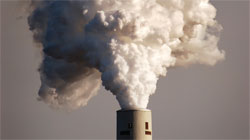What should we think when two grid reliability authorities look at large-scale adoption of renewable energy and come to opposite conclusions? This isn’t pretty and we need to get to the bottom of it.
The North American Electricity Reliability Corp. (NERC) and the Midcontinent Independent System Operator (MISO) conducted and released reports on the impacts of reducing reliance on fossil-fuel power plants and increasing renewable energy production. NERC describes its report as “initial, high-level” and reflects the most negative assumptions when assessing the electricity supply after 2020 and the start of the EPA CO2 measurements.
In contrast, MISO made contributions to Minnesota’s full-on engineering study that includes the plans for transmission necessary for 40% – 50% renewable energy in Minnesota and 15% – 25% renewable energy in that portion of the MISO region.
How different can these be?
The NERC report is all about adding up the total generator capacity. However, when focusing on the EPA’s example renewable energy building block, NERC failed to include additional renewable generation, which despite variability in output, does contribute to the total capacity available to meet demand. This was recognized in the MISO-Minnesota study, which calculated the contribution at peak times in that region as approximately 12% of the wind generator capacity, and 40% of solar installations. Thus, NERC writes that there will be significant increases in wind and solar generation, but ignored the capacity contribution from that additional generation.
This difference also extends to how the two treat conventional generation additions. Both organizations assume that demand for electricity continues to grow through 2030, and yet only one of them includes a combination of energy efficiency, demand response, and new power plants to meet the demand. The MISO-Minnesota study adds a variety of new supply types across MISO. NERC, even when describing MISO, suggests no new supplies of any kind will be added.
Even transmission isn’t the problem NERC says it might be
The Minnesota study found that transmission needs could be met with renovations of existing transmission facilities. No new lines were required for MISO to have 15% energy from wind and solar, and Minnesota to have 40%. NERC admits it hasn’t studied the need for new lines, and is just saying that they expect new lines will be both needed, and difficult to permit and build. NERC gives the lead time for new transmission as “typically 10–15-years.”
This post is part of a series on the EPA Clean Power Plan.
NERC’s discussion of renewable energy emphasizes the need for transmission, especially in MISO and the Southwest Power Pool (SPP). Fortunately for grid reliability, consumers, and the expansion of wind, these two regions have been pro-active in building transmission.
In the SPP region, details belie NERC’s assumptions. For example, there was news last week of the completion of a major new 108 mile-long transmission line completed ahead of schedule and 30% under budget. This transmission line was built by a company that was only formed in May 2008 to work in SPP. It applied for permit to build with Kansas authorities in Feb 2011, and received approval in June 2011. Six years and five months after starting, this company has a new 345-kV line up and ready.
NERC makes reliability assessments all the time, but NERC has been warned by the Federal Energy Regulatory Commission, its supervisor, not to advocate for changes in clean air policy. The contrast between these two organizations that are both responsible for reliability demonstrates how attitude and assumptions can affect what the studies say.
Earlier, MISO made a quick review of the costs to comply with EPA’s proposed CO2 rules and used assumptions that confounded the results. We knew MISO could do better, if they were really looking at the whole question. This week, we have those better results. We look forward to the next time MISO addresses the EPA Clean Power Plan, hoping they use the lessons of this recent study and the comments and changes that have been seen in discussions with MISO stakeholders. Hopefully, when NERC makes its more careful assessments of the EPA power plant rule, which NERC is promising to do, we will see they can do better, too.


